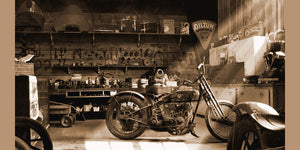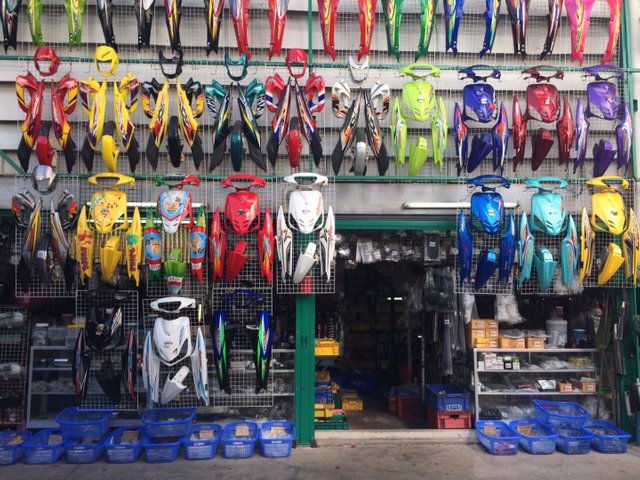Discover the Latest Motocross Gear NZ for each Level of Rider
Understanding the Necessary Parts of a Motorcycle: A Comprehensive Overview for Fanatics
For motorbike lovers looking to raise their riding experience and guarantee their bikes run smoothly, comprehending the vital parts of a bike is vital. Each aspect, from the engine's complex operations to the vital function of the stopping systems, not only impacts efficiency yet additionally safety and comfort. This guide will certainly walk through the basic components that every biker need to be acquainted with, making it possible for educated selections in both maintenance and prospective upgrades. As we begin this exploration, one must ask: exactly how does each part communicate to create the smooth adventure every enthusiast looks for?
Engine Parts

The camshaft plays an important function in managing the timing of the engine's shutoffs, making sure the accurate opening and closing essential for efficient gas and air consumption, as well as exhaust expulsion. This timing is essential to keeping optimum engine efficiency and effectiveness. In addition, the carburetor or fuel injection system, depending on the bike model, is accountable for mixing air with gas in the correct proportion for combustion.
The cooling system, either air or liquid-based, works to keep the engine's temperature level within operational restrictions, stopping getting too hot and guaranteeing long life - motox parts nz. Each component, carefully created and integrated, adds to the seamless procedure of the engine, defining the motorbike's power result and overall performance
Transmission System
Essential to the motorbike's functionality, the transmission system makes sure reliable power transfer from the engine to the wheels. This system comprises a number of vital parts, including the clutch, transmission, and final drive, each playing a crucial duty in equating the engine's power right into activity. The clutch, normally operated by a hand bar, offers to engage and disengage the engine from the transmission, permitting for smooth gear changes and controlled velocity.
The gearbox, commonly referred to as the transmission correct, consists of a set of gears that cyclists can by hand change with to readjust the bike's rate and torque output. These gears are organized in a series that allows the bike to accelerate smoothly and maintain optimal engine performance throughout different rates. Many motorcycles utilize a consecutive gearbox, requiring the motorcyclist to move gears in an established order.
Braking Mechanisms
While recognizing the transmission system is key to utilizing a motorbike's power, equally essential is the ability to regulate and stop that power efficiently, which is where stopping systems come into play. Brakes are essential for safety and efficiency, supplying the rider with the essential control to navigate numerous surfaces and conditions. Commonly, motorbikes include two sorts of stopping systems: disc brakes and go now drum brakes.
Disc brakes are more prevalent in modern motorbikes due to their superior performance. They contain a brake disc, caliper, and pads. When turned on, the caliper squeezes the brake pads versus the spinning disc, converting kinetic energy into warmth, thus slowing down the wheel. This system provides much better heat dissipation, constant efficiency, and boosted stopping power, especially in damp problems.
Alternatively, drum brakes, though less typical, are still located in some bikes. They function by pressing brake footwear versus the inner surface of a drum affixed to the wheel. While normally less effective in warmth dissipation and quiting power, drum brakes are simpler and a lot more cost-efficient.
Recognizing these stopping systems' subtleties permits riders to preserve their motorbikes effectively and value the engineering that makes certain safe and efficient quiting.
Suspension and Steering
Suspension and steering systems are important components that significantly influence a motorcycle's handling and trip comfort. The suspension system, being composed of forks at the front and shock absorbers at the back, takes in road abnormalities, improving stability and control. Front forks, normally telescopic or inverted, compress and rebound to reduce impacts, while back shock absorbers maintain tire call with the road, important for grip and safety.
Steering, centered around the handlebars, attaches the rider to the motorcycle's directional control. The guiding head bearings ensure smooth procedure, allowing accurate maneuverability. Correct alignment and upkeep of these bearings are critical for foreseeable guiding response and lowering motorcyclist tiredness.
The suspension's adjustability is another critical facet; preload, damping, and rebound settings enable customization to match different riding designs and problems. This flexibility is vital for optimizing efficiency, whether navigating city streets or taking on sturdy trails. Technologies like electronic shock absorber supply real-time adjustments, boosting experience high quality across varied terrains.

Electrical Solutions
After making sure a controlled and smooth experience with efficient suspension and guiding systems, focus turns to the electrical systems, a critical facet of modern motorbikes. These systems play an essential duty not just in beginning the engine yet also in powering numerous elements that boost the capability and security of the bike.
At the heart of a motorbike's electric system is the battery, which shops electrical power essential for beginning the engine and powering auxiliary systems - motorbike shop. The generator or generator, coupled with the rectifier-regulator, makes sure the battery remains charged while the motorcycle is in operation, converting mechanical energy right into electric energy and maintaining voltage levels
The ignition system, one more essential part, is in charge of firing up the air-fuel mix in the engine's cylinders. Modern motorbikes typically make use of an electronic ignition system, offering better performance and dependability compared to conventional systems.
Illumination systems, including headlights, tail lights, and indicators, are likewise crucial, making certain view it presence and security for the cyclist. Additional digital components such as sensors, control systems, and displays add to advanced features like fuel injection monitoring, anti-lock stopping systems (ABDOMINAL), and digital dashboards, further boosting the riding experience.
Final Thought
An extensive understanding of a motorbike's vital elements, consisting of the engine, transmission system, braking devices, suspension, steering, and electrical systems, is essential for fanatics aiming to enhance efficiency, convenience, and security. Proficiency of these components enables for educated decisions relating to upkeep and upgrades, ultimately enhancing the riding experience. By integrating this expertise, riders can ensure their bikes run at peak performance and reliability, consequently you could look here taking full advantage of both enjoyment and durability of their automobiles.
For bike enthusiasts looking to raise their riding experience and guarantee their bikes run smoothly, understanding the essential parts of a motorbike is extremely important.Integral to the motorcycle's functionality, the transmission system makes sure efficient power transfer from the engine to the wheels.While comprehending the transmission system is essential to using a bike's power, just as important is the ability to control and stop that power effectively, which is where stopping devices come right into play. Commonly, motorcycles include two types of braking systems: disc brakes and drum brakes.
An extensive comprehension of a motorbike's crucial parts, consisting of the engine, transmission system, stopping systems, suspension, steering, and electrical systems, is vital for lovers aiming to enhance efficiency, convenience, and safety.